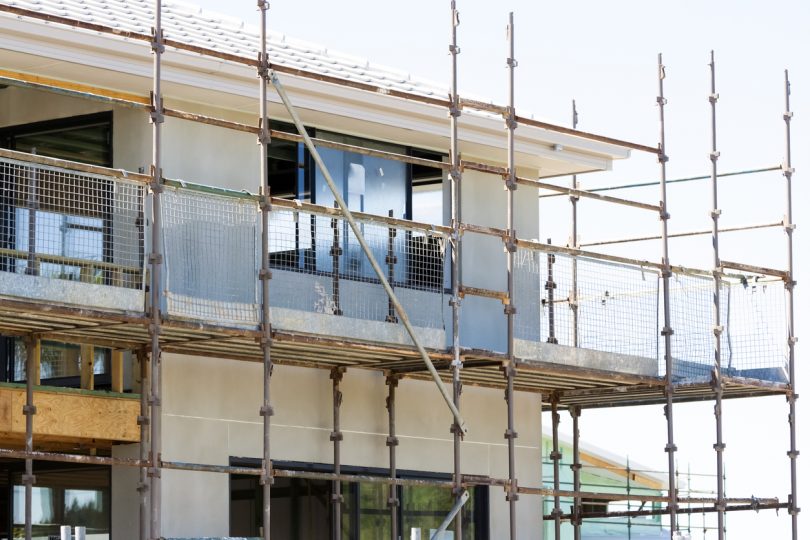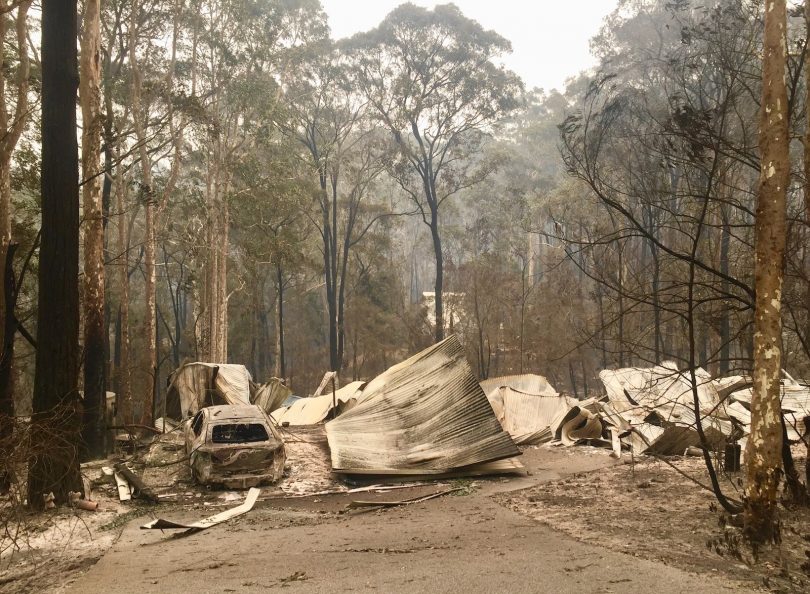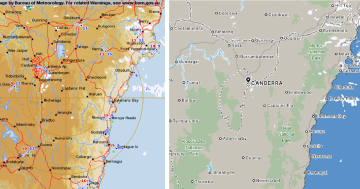
A lack of trades and materials is slowing rebuilding and repairs from the region’s natural disasters. Photo: File.
Insurance is something we tend to set and forget, but one year on from the Black Summer bushfires, hail storms and floods that wreaked havoc on our region, home owners and businesses are learning some hard lessons – reporting multiple problems with the insurance they thought was going to help them when they needed it.
One of the biggest issues to emerge out of the region’s bushfires and Canberra’s hail storm has been problems with under insurance – cases when people do not have enough insurance to cover the full replacement cost of the loss or damage to the things they own, or find they are not insured for some parts of their loss.
Many people who lost homes in the bushfires were comforted by the thought that they had insurance and could build anew, but they have been devastated to find they were underinsured.
Allinsure partner Peter Chamberlain says underinsurance clauses in building and contents insurance policies are designed to prevent people from underinsuring their property in order to reduce premiums, but they are rarely highlighted to customers.
He says purchasing policies directly from an insurer’s website using best guesses on the value of property leaves people particularly vulnerable to being underinsured.
“There are heaps of resources, both on the web and via brokers, to help you calculate the value of your property,” says Peter. “For commercial clients, we recommend getting a building valuation on a regular basis to ensure you nominate a sum that will allow you to rebuild, taking into consideration additional costs such as removal of debris and current building regulations.”
Peter also recommends increasing cover by at least CPI every year to ensure the cover reflects price increases to repair or replace property.

Removal of debris by the NSW Government slowed the process of rebuilding following the Black Summer bushfires. Photo: Lisa Herbert.
“Keep in mind that in the case of mass claim events such as the recent bushfires and hailstorms, when large numbers of people are claiming for repairs or rebuilds, costs will increase with demand,” he says. “So while your policy value may reflect the costs during normal business periods, when there is a shortage of trades or materials those costs may rise sharply and leave you without enough money to cover the rebuild or repair.
“This is one of the reasons there have been so many delays for repair of hail damage and bushfire rebuilds. There is just not enough resources available to get through all the work.”
Insurance advisors can assist with deciding whether to opt for a cash settlement or rebuild, and in cases where out-of-area tradespeople move in to help with work, ensure the work is built to local government standards.
Another nasty surprise experienced by those who lost everything was finding out their banks had the first option on the cash payout. It was not a matter of take the cash and begin rebuilding – banks are able to take some or all of the money.
Peter says if a bank sees the value of their mortgaged asset diminish, they may want to claim their money.
“On the other hand, if the insurer is required to replace or make good the asset, they should be happy for the loan to continue,” he says. “Again, it is important to get good advice.”
As well as making sure to regularly review the amount of cover, Peter encourages people to keep an eye on regional council fire zonings. Following a big fire event, residential and commercial areas that were not deemed to be flame zones can be moved up a level of risk and the cost of rebuilding to the higher code may be significant.
“Commercial policies will usually have the benefit of rebuilding up to the current code,” he says. “This covers older buildings that may not have sprinklers or disability access but would have to in a new build. Unfortunately, residential policies often only have limited benefits for this type of cover.
“The Royal Commission into National Natural Disaster Arrangements looked closely at insurance and insurers eager to provide cash settlements. Despite the quick response, policy holders found themselves out of pocket and waiting for builders and trades to come to do the work.
“The best thing is to have some good advice, have someone in your corner, to have the correct policy in place in the first place, and to negotiate with the insurer’s builders and even the banks if a claim does occur.”
Original Article published by Karyn Starmer on The RiotACT.








